No Products in the Cart
Cleaning and preening is what the Mothers® Detail Guide is all about. From the simplest tasks to the most technically challenging, our Guide covers it all.
Posted on May 7, 2021
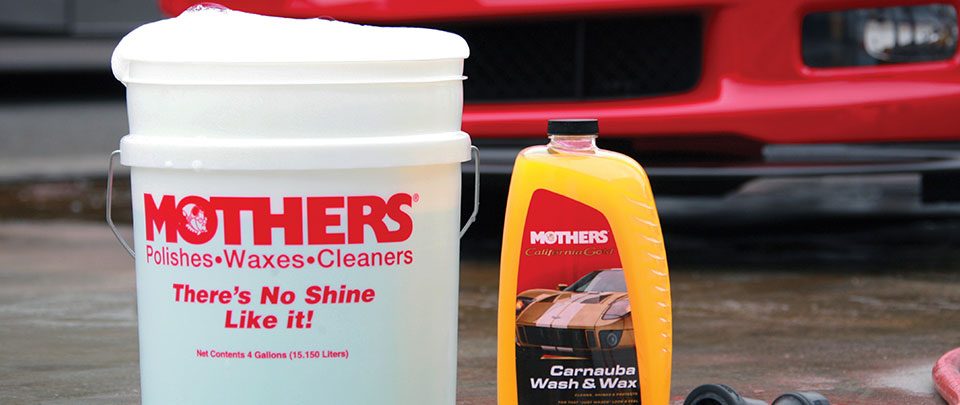
Laying suds to sheetmetal is a major opportunity to bond with your car and/or truck. Get to know those exterior panels, caress every curve, check each gap and groove. Consider all the parts of your vehicle before you wet it down and soap it up. This process benefits from that close attention, because slopping on the soap and hosing it off ain’t enough to achieve a great shine.
Plan ahead for what specific cleaning you will be doing. A quickie wash begets a quickie clean, and while car soap works on any vehicle, there are specialized practices and cleaners that may work even better: there are many steps to car washing to keep in mind when the bucket is at hand. You’re not just washing your car, you’re washing wheels, tires, trim, metal, glass and perhaps a convertible top or truck bed. In many cases (as we’ll specify in this guide), those parts benefit from specific consideration.
Before jumping in, take a few minutes to dig into a Mothers® Polish video that details a few car-washing processes that you might not know. It’s available here on the Mothers® YouTube Channel.
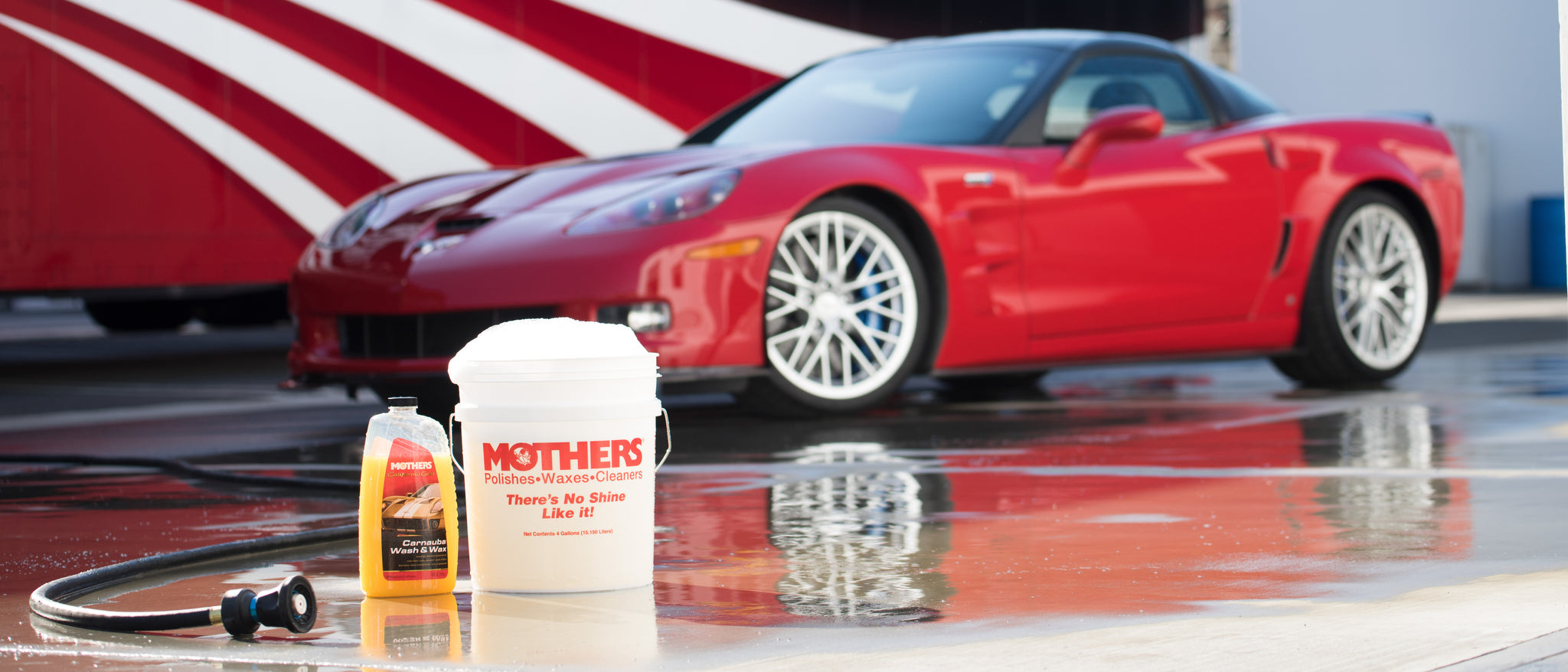
What kind of soap are you using? Suds are nice, but it’s not about the suds, it’s about how the soap cleans. Be sure to keep all non-automotive soaps far, far away from your car – dishwashing detergents and other kitchen cleaners are typically formulated to remove grease and wax (which are not unlike the basic ingredients in most automotive wax and lubricants). Automotive-only washing agents, such as Mothers® California Gold® Carnauba Wash & Wax, are formulated to penetrate and suspend dirt while leaving intrinsic automotive coatings alone. The right car wash can deal with dirt, bugs, tar and grime on your sled, but will not strip wax from the paint or grease from an exposed joint. Car soap is intentionally gentle, so more than one visit to a dirty spot may prove necessary (which highlights another wonderment of good car-wash soap – go ahead and mix it stronger if you have a serious bug graveyard to uproot).
Some car washes (like the Carnauba Wash & Wax) have a dash of carnauba in them, which leaves a sparkle behind after washing. It won’t protect you from a typhoon, but any assistance in maintaining a fine shine is a good thing.
If you must remove wax from automotive paint, the clay bar or paint polish like Mothers® California Gold® Pure Polish can do so without risk to the paint (both are explained in the “Paint Prep & Wax” section). Cleaner waxes also have this effect (such as Mothers® Carnauba Cleaner Wax and Synthetic Paste Wax), though they leave a protective coating behind.

A smart way to deal with caked-on or sticky dirt, sap, dead bugs, bird droppings and other infunkticants is to pre-treat those extra-dirty sections of bodywork. Before you start washing the entire vehicle, coat the aforementioned filthified panels with car soap or a healthy spritzing of Mothers® Waterless Wash & Wax or Instant Detailer. Apply the soap undiluted. Thick car wash soap like Mothers® Carnauba Wash & Wax will cling, and this allows time for it to penetrate before washing the entire car. Don’t worry about damaging the paint – even at full-strength, Mothers® Carnauba Wash & Wax will not affect the vehicle’s finish, just the funk stuck to it. If you want to skip the whole car wash scenario, step up to Speed® Foaming Bug & Tar Remover. It’s no-drip aerosol foam is ideal for pre-soaking and cleaning. Just spray and wipe. Perfect for in the garage or on the road.


In the case of pre-treating race and trail vehicles that see rubber-based dirt like smudges and tire scuffs, Mothers® makes a specialized spray-on/wipe-off cleaner called R3 – Racing Rubber Remover. You can find it online.
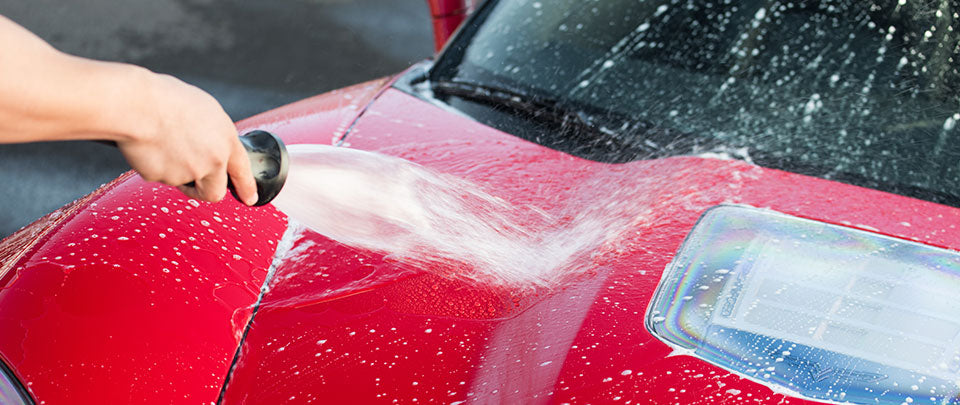
Hose down your vehicle with a firm stream of water that is not a narrow jet – the “Shower” settings on many multi-nozzles is ideal. The car-washing spray should be firm but not harsh, enough to flush an area with water but not a deluge, and easily controlled. Concentrate on loosening dirt and unwanted buildup, but don’t blast a specific spot of stuck-on dirt – that’s what pre-treating and a sudsy wash-mitt are for. A narrow stream of pressurized water will not only distort wax that’s already on the paint, if can damage paint and trim parts. Have that bucket of soaped up water ready before you wet the vehicle (you shouldn’t let any water dry on the paint while filling up the bucket). Get the wet portions of the washing process done quickly, because water that dries on the paint is one more spot to reclean. If it’s hot out, if you live in Death Valley, or if you have no choice but to wash your car in the sun, be sure to keep it wet and cool with regular hosings.
Preparation for the Washing Process
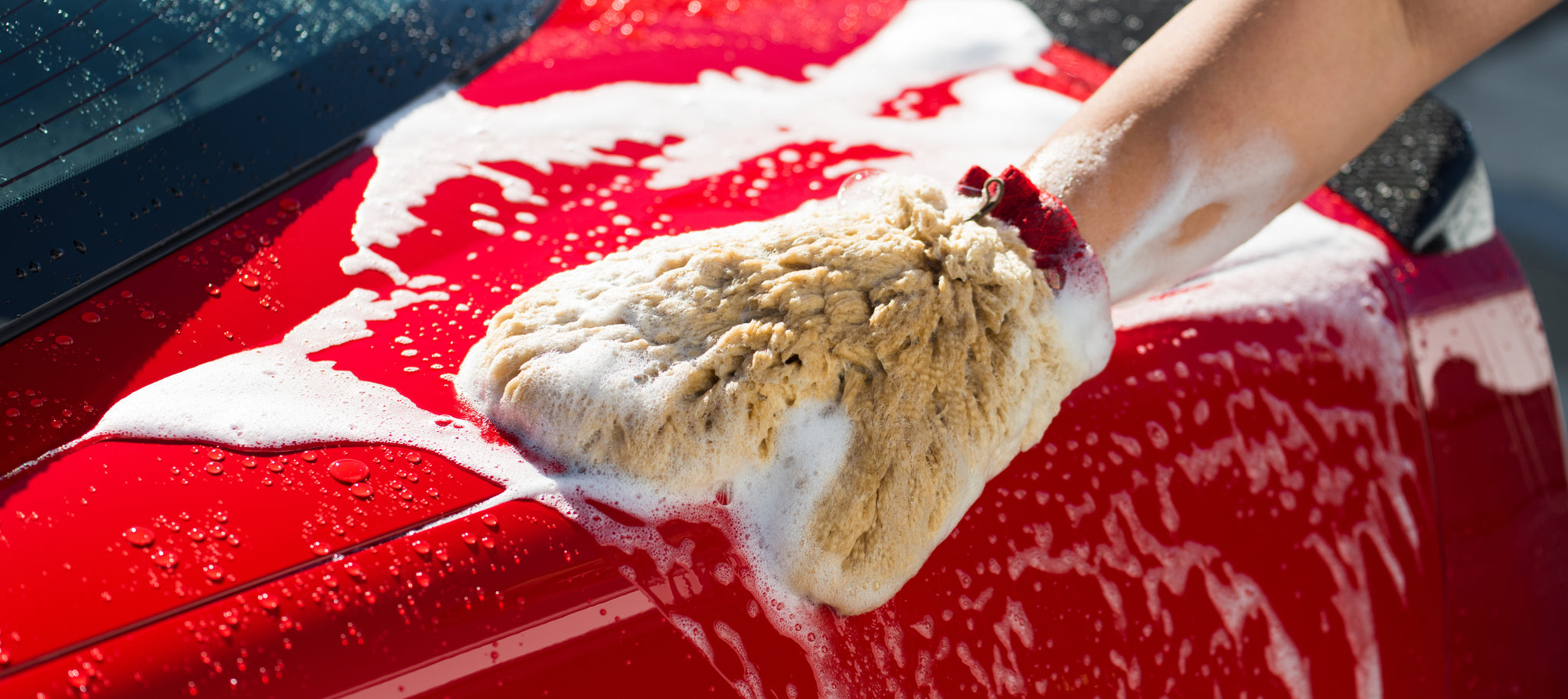
To do the work of transporting suds and applying them to your car, use a wash-mitt. Ideally, it should be clean, thick, non-marring; either synthetic microfiber or natural lamb’s wool. Some experts recommend using an ultra-soft synthetic or animal-hair brush for working cracks and trim gaps. Whatever device you use, rinse it and re-soap it frequently as you clean. Work from the top of the vehicle down, because the lower portions of the car are usually the dirtiest – there’s no sense in dragging the filth from the bottom of the car to the top.
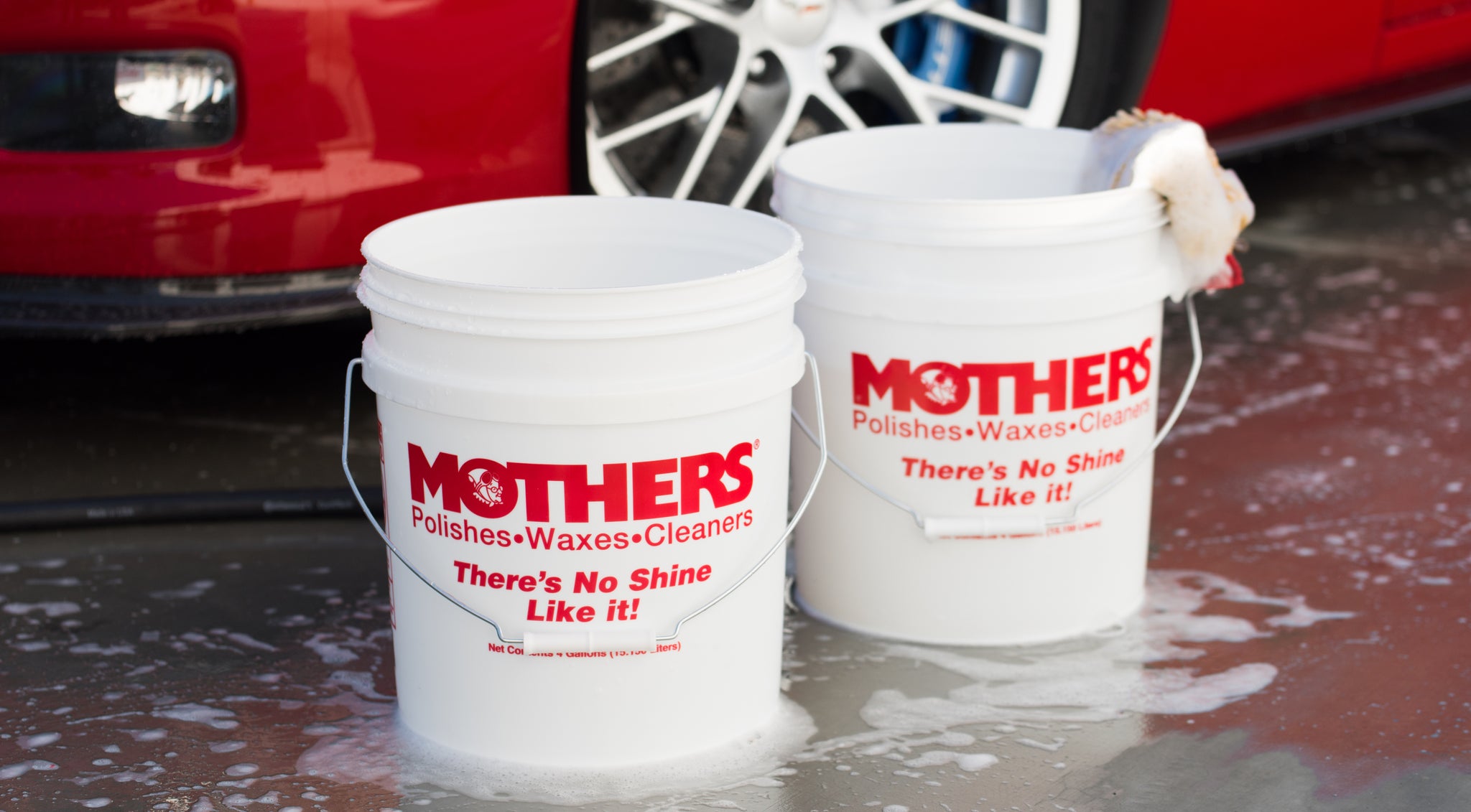
No excuses! The two-bucket method is simple, and only requires a look at the dirty water in the rinse bucket to know it’s effective. How? Prep a second bucket with clean water alongside your soap bucket, and before you re-soap the wash-mitt or sponge, rinse it in the clean water (which you will want to dump and refill once or twice) – keep that dirt from getting back on your car.
Speed Clay as you Wash
Much like whistling while you work, you can also Clay as you wash and kill two of those pesky poop-slinging birds with one stone thanks to these new-fangled surface removal tools (Mothers® recommends our Speed Clay 2.0). Hose off your vehicle first to remove loose dirt. Wash the area with a clean wash-mitt before rinsing thoroughly with water.

Dip the Clay 2.0 into your wash bucket to fully saturate the tool. This helps keep the working section lubricated, which is crucial to claying performance.
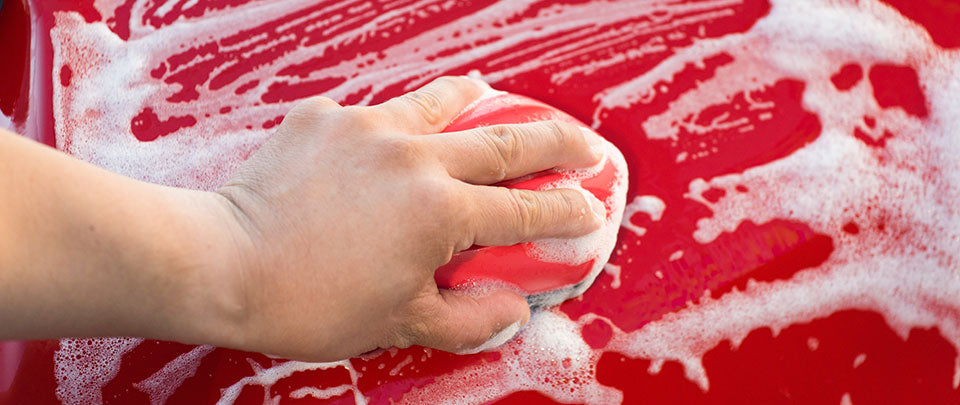
Lightly glide the tool across the working surface in a linear motion. Your paint should be smooth to the touch and you can run your hand over the finished area to check for any missed spots. All is not lost if you drop this clay tool, just rinse it with water and continue claying. When finished, rinse your vehicle and dry thoroughly. It’s that easy (click here to view a short video on how to use Speed Clay 2.0).

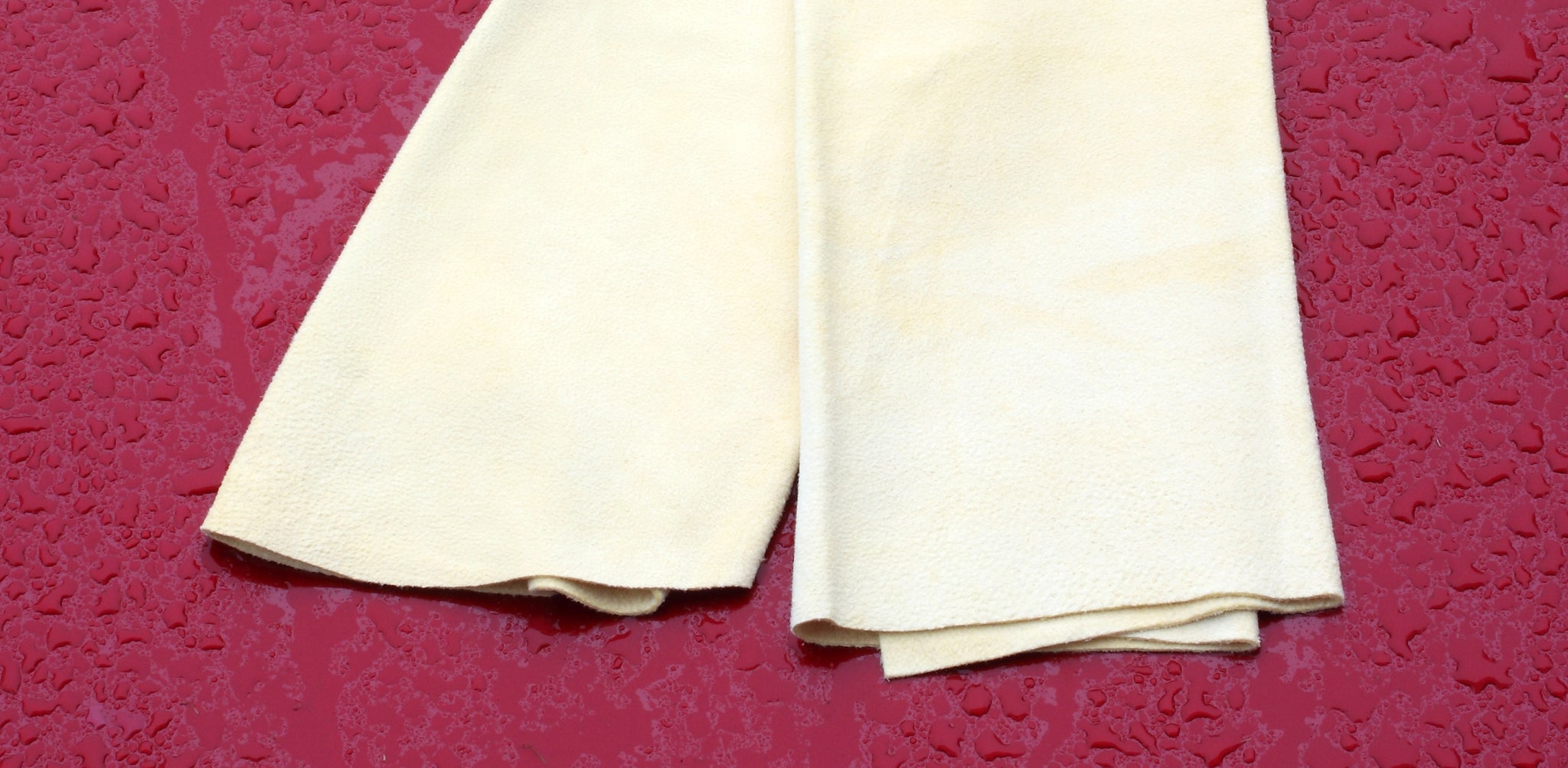
If you drop any mitt, sponge or cleaning device or on the ground, it’s done for the day – don’t let it contact your paint again. You can examine it thoroughly and remove every scratchy thing that can damage your vehicle’s finish and toss it in the washer (gentle cycle), or just throw it away. Whether or not you drop it, feel free to toss the wash-mitt in the washing machine after each car wash (as particles of dirt will be trapped in the fibers). At the least, give it a thorough rinsing.

Dry the vehicle as soon as you finish washing it, and be sure to use cotton or microfiber towels. We recommend one in each hand, or at least being prepared to use a second towel as the first gets too wet. We recommend a quality microfiber towel. Its tiny synthetic fibers won’t scratch your paint like regular poly-based synthetics. Pound for pound, microfiber holds more water. If you insist on cotton towels, quality is important—the thicker the nap, the more pile there is to cushion any dirt and debris picked up while drying.

Before drying your vehicle, run a slow flooding flow of water over all flat surfaces. This will encourage a sheeting action, pulling water off the paint as the flow passes by. It won’t take much water to create the sheeting action necessary to water-dry your car’s flat metal surfaces.
Car-specific towels are available for drying work – thick, waffle-knit microfiber material that holds a tremendous amount of water. Remember to chase all door jambs, hatch, trunk and hood openings to make sure they’re dried as well – a thin microfiber detailing towel works well for those nooks and crannies.

Tiny Techniques for Trick Tidying
You’ll probably wind up with water spots if you don’t dry your vehicle fast enough. Chase water spots with a burst of Mothers® Instant Detailer or Waterless Wash & Wax and a microfiber towel, and you’ll be able to remove all but the most etched water spots. The worst etching requires a cleaner or polish and some extended attention – see the next section in this guide.
A valuable step in the drying process involves further washing. As it’s difficult to thoroughly clean jamb areas on any vehicle without getting water in the interior, you can hit those spots after drying the rest of the vehicle. A clean, Instant Detailer or a Waterless Wash & Wax-damped towel or waffle-weave microfiber detailing towel can swipe away most of the offending dust. However, if there’s stuck-on dirt, you’ll want to go back and grab the wash-mitt and do some more washing.
If you want to crank up the glow of your paint beyond standard-issue shiny, apply a spray wax to the wet finish as you dry the vehicle, post-wash. This technique is a popular way to maximize shine on the show-car circuit. Working around the vehicle one section at a time, a spray wax like Mothers Speed® Spray Wax or California Gold® Spray Wax can be applied with a clean towel, or directly to the paint. Spread it around evenly, just as you would with a traditional wax. Let it dry to a dull haze and then buff it to a shine with a fresh towel. This process will also provide an additional layer of protection between regular washing. Speaking of detailer, Mothers® Instant Detailer can be applied in the same fashion – apply the detailer liberally to the wet paint, but instead of waiting for a haze, immediately dry it with a clean microfiber or cotton towel.

Using a detailing spray, wet then buff each panel in the same fashion you’d use when drying. If you have Mothers Speed® Spray Wax or California Gold® Spray Wax (which has a light polymer wax suspended in its formula that offers a scosche of protection and reinforcement of existing wax coatings), coat one section at a time. Once the spray wax has dried to a haze, buff out said haze with a clean towel.
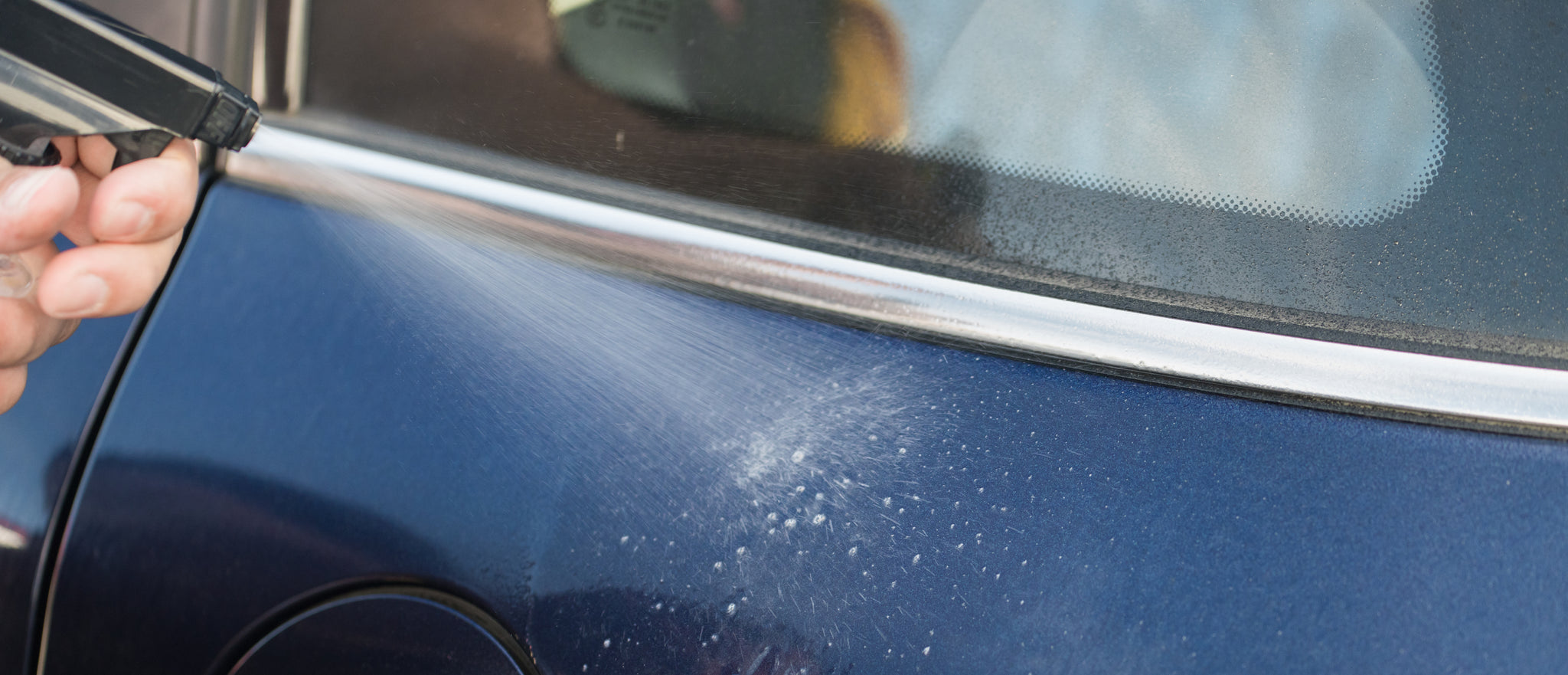

What if you’re ready to wash your car and you’re missing a few items, namely a hose and water? Gone are the days when you’d slink away in defeat, doomed to an afternoon of shame eating and re-runs. Waterless washes provide a convenient alternative to traditional washing. These formulas, like Mothers® Waterless Wash and Wax, create extreme lubrication to encapsulate and dissolve dirt and grime. Simply spray on the surface, then use a clean, soft microfiber to carefully wipe the dust and dirt away. For your final pass, use a fresh microfiber to buff-off any residue.
When washing car towels, use limited amounts of detergent, and don’t dry them with fabric softener – it leaves trace chemicals in the towels that can contaminate your wax or leave streaks. Also, a hot wash with a cold rinse for your cotton towels can help reduce lint (no hot water for microfiber, however – cold and cold).